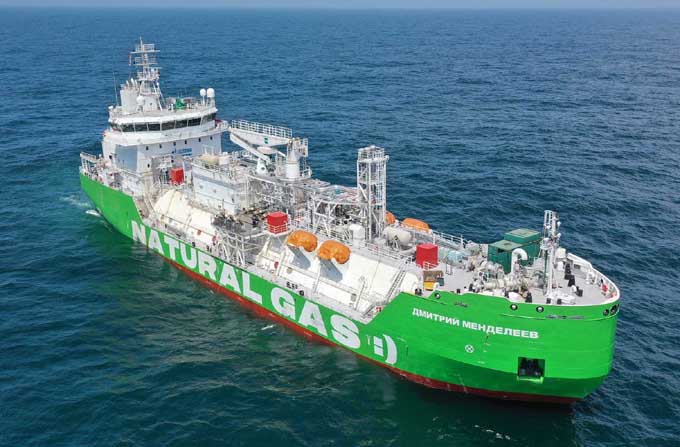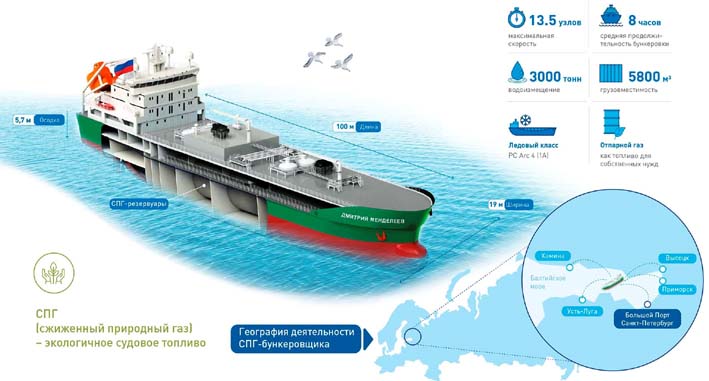Construction of Russia’s first ever bunkering vessel - for natural gas (LNG) refuelling of cargo and passenger ships - is now complete: the final stage of building the Dmitry Mendeleev having involved testing of gas and cryogenic (freezing) equipment, loading systems, and LNG storage and offloading pumps and compressors.(1) The vessel will shortly begin its maiden voyage towards its fixed berthing in the Baltic Sea.

This bunkering vessel, named after the great Russian chemist Dmitry Mendeleev, will provide ship-to-ship LNG transportation and refuelling at ports throughout the Gulf of Finland and the Baltic Sea - including St Petersburg, Ust-Luga, Primorsk, Kaliningrad and Vyborg.(2)
Anatoly Cherner, Deputy Chairman of the Management Board, Gazprom Neft, commented:
“LNG is going to play a key role in the decarbonisation of maritime transport, in the medium term. Thanks to its high environmental and performance features, LNG is set to take a significant market share in sales of marine fuels in international shipping. In successfully implementing Russia’s first project to build an LNG bunkering vessel, Gazprom Neft has, effectively, created a new market sector for the country - in marine gas motor fuel - from scratch. This year will see us starting commercial LNG operations in the Baltic region.”

The vessel is 100 metres in length, 19 metres wide, and can transport up to 5,800 m3 of liquid natural gas. Its Arc4 ice-class reinforced hull means it can navigate one-year-old ice (of up to 80 cm thick). The latest shipbuilding and LNG transportation technologies have been utilised on the Dmitry Mendeleev project, in line with the most recent environmental standards governing maritime transport and LNG refuelling processes. The Dmitry Mendeleev is also environmentally friendly, in that it will be using tank-return gas (TRG or “boil-off” gas) from transported cargo as fuel for its onboard power plant. All LNG-bunkering equipment is fully compliant with MARPOL and ECO-S environmental standards. Its integrated digital system means the vessel can be controlled by just one crew member, directly from the navigation bridge.
(1) “Ship-to-ship” bunkering involves ships being refuelled directly from the deck of a specialist bunkering vessel. This technology means bunkering can be undertaken when ships are moored or docked at a pier.
(2) MARPOL refers to the “International Convention for the Prevention of Pollution from Ships”. An amendment to the main treaty in early 2015 introduced further regulation governing the permissible amount of sulphur in marine fuels used in vessels covering Sulphur Emission Control Areas (SECA, covering shipping zones including the Baltic Sea, the North Sea and the English Channel, where vessels are required to switch to low-sulphur fuels). With effect from 1 January 2020 the requirements of the MARPOL Convention forbidding the use of fuels with sulphur content above 0.5 percent have come into force throughout international navigation.
KeyFacts Energy: Gazprom Russia country profile
 KEYFACT Energy
KEYFACT Energy